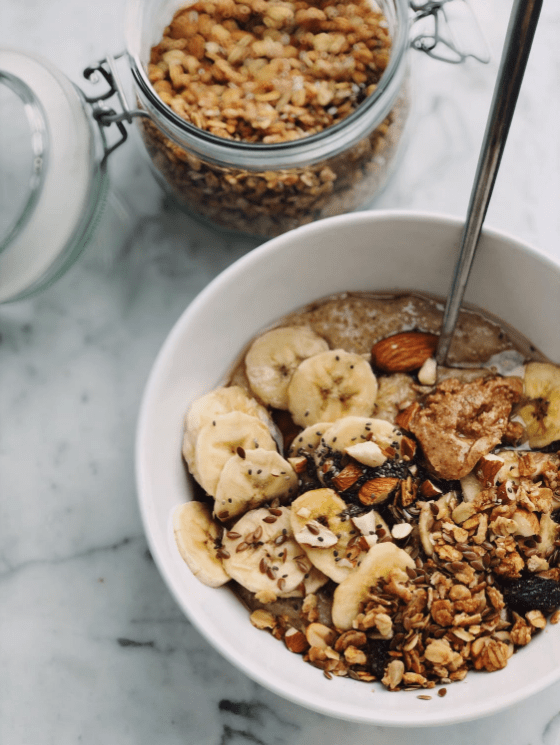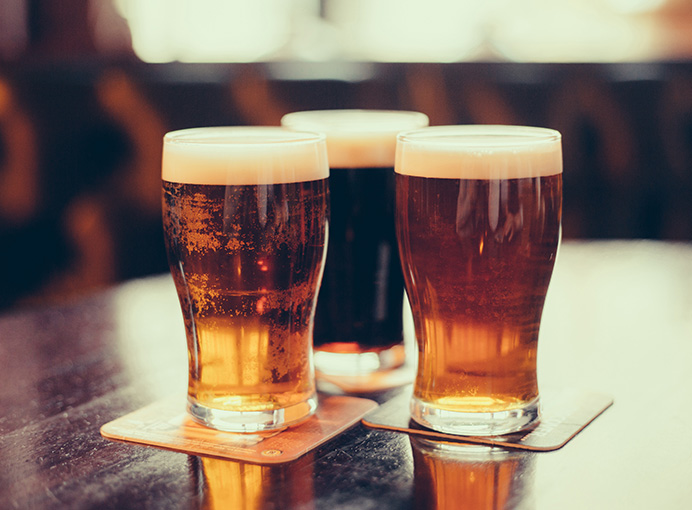Sources of Gluten
There are many food items that may contain gluten, often in hidden or unexpected ways. Always read the label of any food product you buy if “gluten-free” is not specified on the label.

Gluten-Containing Grains and Their Derivatives
- Wheat
- Varieties and derivatives of wheat such as:
- wheatberries
- durum
- emmer
- semolina
- spelt
- farina
- farro
- graham
- KAMUT® khorasan wheat
- einkorn wheat
- Rye
- Barley
- Triticale
- Malt in various forms including: malted barley flour, malted milk or milkshakes, malt extract, malt syrup, malt flavoring, malt vinegar
- Brewer’s Yeast
- Wheat Starch that has not been processed to remove the presence of gluten to below 20ppm and adhere to the FDA Labeling Law

Common Foods That Contain Gluten
- Pastas:
- raviolis, dumplings, couscous, and gnocchi
- Noodles:
- ramen, udon, soba (those made with only a percentage of buckwheat flour) chow mein, and egg noodles. (Note: rice noodles and mung bean noodles are gluten free)
- Breads and Pastries:
- croissants, pita, naan, bagels, flatbreads, cornbread, potato bread, muffins, donuts, rolls
- Crackers:
- pretzels, goldfish, graham crackers
- Baked Goods:
- cakes, cookies, pie crusts, brownies
- Cereal & Granola:
- corn flakes and rice puffs often contain malt extract/flavoring, granola often made with regular oats, not gluten-free oats
- Breakfast Foods:
- pancakes, waffles, french toast, crepes, and biscuits.
- Breading & Coating Mixes:
- panko breadcrumbs
- Croutons:
- stuffings, dressings
- Sauces & Gravies (many use wheat flour as a thickener)
- traditional soy sauce, cream sauces made with a roux
- Flour tortillas
- Beer (unless explicitly gluten-free) and any malt beverages (see “Distilled Beverages and Vinegars” below for more information on alcoholic beverages)
- Brewer’s Yeast
- Anything else that uses “wheat flour” as an ingredient
Foods That May Contain Gluten
These foods must be verified by reading the label or checking with the manufacturer/kitchen staff.
- Energy bars/granola bars – some bars may contain wheat as an ingredient, and most use oats that are not gluten-free
- French fries – be careful of batter containing wheat flour or cross-contact from fryers
- Potato chips – some potato chip seasonings may contain malt vinegar or wheat starch
- Processed lunch meats
- Candy and candy bars
- Soup – pay special attention to cream-based soups, which have flour as a thickener. Many soups also contain barley
- Multi-grain or “artisan” tortilla chips or tortillas that are not entirely corn-based may contain a wheat-based ingredient
- Salad dressings and marinades – may contain malt vinegar, soy sauce, flour
- Starch or dextrin if found on a meat or poultry product could be from any grain, including wheat
- Brown rice syrup – may be made with barley enzymes
- Meat substitutes made with seitan (wheat gluten) such as vegetarian burgers, vegetarian sausage, imitation bacon, imitation seafood (Note: tofu is gluten-free, but be cautious of soy sauce marinades and cross-contact when eating out, especially when the tofu is fried)
- Soy sauce (though tamari made without wheat is gluten-free)
- Self-basting poultry
- Pre-seasoned meats
- Cheesecake filling – some recipes include wheat flour
- Eggs served at restaurants – some restaurants put pancake batter in their scrambled eggs and omelets, but on their own, eggs are naturally gluten-free

Distilled Beverages And Vinegars
Most distilled alcoholic beverages and vinegars are gluten-free. These distilled products do not contain any harmful gluten peptides even if they are made from gluten-containing grains. Research indicates that the gluten peptide is too large to carry over in the distillation process, leaving the resulting liquid gluten-free. However, some types of alcoholic beverages do contain an unsafe amount of gluten for people with celiac disease, and include those with added color or flavoring such as dessert wines, and those made from barley malt, such as bottled wine coolers. For these, consumers should check the label, and if in doubt, contact the company. Beers, ales, lagers, malt beverages and malt vinegars that are made from gluten-containing grains are not distilled and therefore are not gluten-free. There are several brands of gluten-free beers available in the United States and abroad.
Other Items That Must Be Verified By Reading The Label Or Checking With The Manufacturer
- Lipstick, lipgloss, lip balm, or other cosmetic used near the mouth because they may be unintentionally ingested
- Oral care and dental products (Learn about Oral Health)
- Communion wafers
- Herbal or nutritional supplements
- Drugs and over-the-counter medications (Learn about Gluten in Medication)
- Vitamins and supplements (Learn about Vitamins and Supplements)
- Play-dough: children may touch their mouths or eat after handling wheat-based play-dough. For a safer alternative, make homemade play-dough with gluten-free flour.
Label Reading
Products labeled wheat-free are not necessarily gluten-free. They may still contain spelt (a form of wheat), rye, or barley-based ingredients that are not gluten-free. To confirm if something is gluten-free, be sure to refer to the product’s ingredient list.
Cross-Contact
When preparing gluten-free foods, it is important to avoid cross-contact. Cross-contact occurs when foods or ingredients come into contact with gluten, generally through shared utensils or a shared cooking/storage environment. In order for food to be safe for someone with celiac disease, it must not come into contact with food containing gluten.
Places where cross-contact can occur:
- Toasters used for both gluten-free and regular bread
- Colanders
- Cutting boards
- Flour sifters
- Deep fried foods cooked in oil shared with breaded products
- Shared containers including improperly washed containers
- Condiments such as butter, peanut butter, jam, mustard, and mayonnaise may become contaminated when utensils used on gluten-containing food are double-dipped
- Wheat flour can stay airborne for many hours in a bakery (or at home) and contaminate exposed preparation surfaces and utensils or uncovered gluten-free products
- Oats – cross-contact can occur in the field when oats are grown side-by-side with wheat, select only oats specifically labeled gluten-free
- Pizza – pizzerias that offer gluten-free crusts sometimes do not control for cross-contact with their wheat-based doughs
- French fries
- Non-certified baked goods e.g., “gluten-free” goods from otherwise gluten-containing bakeries
- Bulk bins at grocery stores or co-ops
Easily contaminated foods:
- Oats – look for oats that are specifically labeled gluten-free
- Pizza – pizzerias that offer gluten-free crusts sometimes do not control for cross-contact with their wheat-based doughs
- French fries
- Non-certified baked goods – e.g., “gluten-free” goods from otherwise gluten-containing bakeries
If In Doubt, Go Without!
When unable to verify ingredients for a food item or if the ingredient list is unavailable do not eat it. Adopting a strict gluten-free diet is the only known treatment for those with gluten-related disorders.